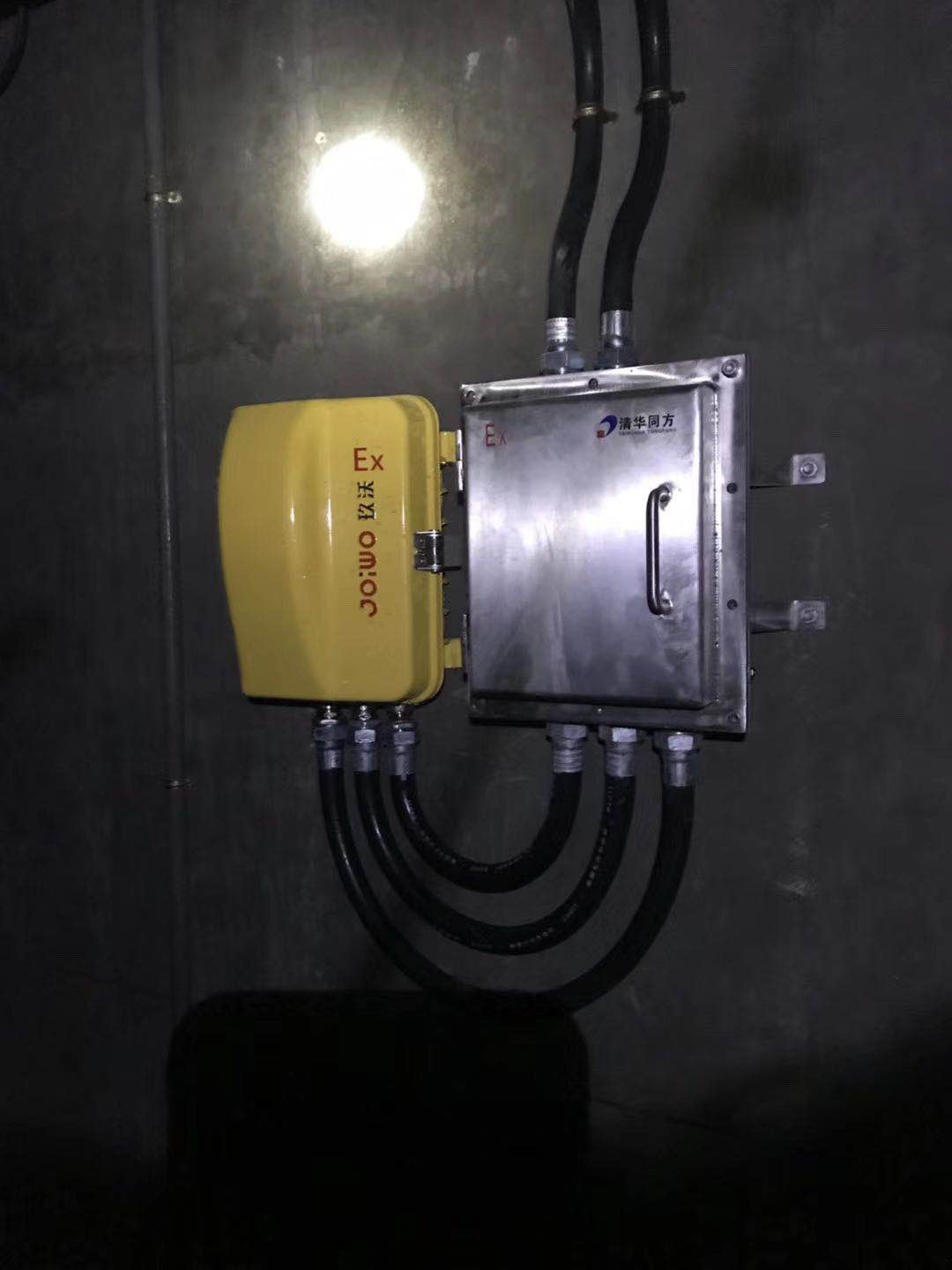Modern Explosion Proof telephone models feature rugged enclosures, GPS tracking, IoT integration, and wireless communication. These smart features strengthen safety by preventing ignition risks and enabling real-time coordination. Hazardous site operators rely on these devices for reliable, efficient communication, even in remote or extreme environments.
Principaux à retenir
- Modern explosion proof telephones use smart technology like IoT and 5G to provide real-time monitoring and improve safety in hazardous sites.
- Advanced audio and emergency alert features ensure clear communication and quick response during critical situations, even in noisy or extreme environments.
- Rugged designs and strict certifications guarantee these telephones work reliably under harsh conditions, protecting workers and supporting safety compliance.
Key Smart Features in Explosion Proof Telephone Technology

IoT Integration and Remote Monitoring
Explosion Proof telephone technology now leverages IoT integration to transform hazardous site communications. These devices connect with cloud dispatch platforms, enabling real-time monitoring and analytics. Operators gain instant access to environmental data, asset status, and worker locations. Predictive analytics and remote diagnostics shift maintenance from reactive to proactive, reducing downtime and optimizing costs. Sensors embedded in these telephones provide real-time alerts, supporting integration into smart factory ecosystems. AI-powered diagnostics further enhance predictive maintenance and incident detection. The adoption of 5G connectivity allows for rapid data transmission, supporting applications like AR-based remote assistance. These advancements improve operational oversight and worker safety in volatile environments.
Conseil: Modular platforms in explosion proof telephones support seamless migration from analog to IP systems, aligning with digital transformation strategies in hazardous industries.
Advanced Audio and Noise Cancellation
Hazardous sites often present high levels of background noise, making clear communication a challenge. Modern Explosion Proof telephone models address this with advanced audio processing and noise cancellation technologies. These features filter out ambient sounds, ensuring that critical messages reach personnel without distortion. High-quality microphones and speakers, combined with AI-driven audio enhancement, allow workers to communicate effectively even in the loudest environments. This clarity is essential for both routine operations and emergency situations, where every second counts.
Emergency Call and Alert Functions
Emergency response capabilities form a core component of explosion proof telephones. Devices integrate emergency call stations, duress buttons, and phone line simulators, enabling immediate contact with emergency services at the push of a button. Audible alarms and flashing lights provide rapid notification to all personnel. On offshore installations, integration with Public Address and General Alarm systems ensures that emergency messages override other communications for immediate reception. Visual notification systems, such as explosion-proof strobes and digital signage, complement audible alerts, especially in noisy environments. Two-way communication and crew monitoring with GPS and RFID tracking enhance accountability and safety. Automated scenarios can trigger multiple alerts and coordinate with first responders, streamlining emergency workflows and improving response times.
Rugged Design and Environmental Protection
Explosion Proof telephone devices must withstand extreme conditions. Manufacturers use advanced materials and design techniques to eliminate sparks and heat generation. Intrinsically safe batteries, reinforced casings, and specialized sealing prevent dust and liquid ingress. Devices often feature housings made from corrosion-resistant aluminum alloy die casting, providing protection against dust, dirt, and corrosive water spray. Environmental protection ratings such as IP66, IP68, and IP69K ensure resistance to dust and water, while impact protection rated IK10 guarantees durability against mechanical shocks. These telephones operate reliably across a wide temperature range, from -40°C to +70°C. Intrinsically safe circuit designs and explosion-proof lithium-ion batteries further reduce risk. Compliance with military-grade standards like MIL-STD-810H ensures performance in the harshest industrial environments.
- Key rugged features include:
- Weatherproof keypads for use with gloves
- Hermetically sealed non-contact hook switches
- Interfaces protected with rubber sealing rings and anti-falling screws
Certification and Compliance Standards
Explosion Proof telephone solutions must meet strict international certification and compliance standards to ensure safe deployment in hazardous environments. The main standards include:
| Certification Standard | Region/Industry Applicability | Key Features and Notes |
|---|---|---|
| IEC 60079 Series | Mondial | Core explosion protection standards covering various protection methods |
| Ax | European Union, Middle East, Asia Pacific | EU directive for explosive atmospheres; requires CE marking and Ex symbols |
| UKCA | United Kingdom | UK compliance mark for Ex standards, replacing ATEX from 2023 |
| IECEX | Global (Australia, Singapore, New Zealand, Israel) | International certification for cross-border approvals |
| NEC 500/505 | North America (USA and Canada) | US National Electrical Code standards for hazardous areas |
Compliance with these standards ensures that explosion proof telephones meet legal and safety requirements across different regions. Manufacturers often pursue multiple certifications, such as ATEX and UL, to facilitate global deployment. These certifications drive the adoption of features like corrosion resistance, intrinsic safety, and environmental protection, making the devices suitable for the most demanding hazardous zones.
Enhancing Safety and Operations with Explosion Proof Telephone Solutions

Real-Time Communication in Critical Situations
Explosion Proof telephone systems deliver reliable communication during emergencies. In industrial fires or explosions, these devices maintain connectivity even in signal-blocked areas created by steel and concrete. Teams use intrinsically safe telephones and portable repeaters to extend coverage into underground tunnels and high-rise buildings. Real-time voice and video transmission from the field to command centers enables rapid information sharing and coordinated rescue efforts. Integration with public address and dispatch systems ensures that emergency instructions reach all personnel instantly.
Automated Alerts and Incident Response
Modern solutions automate alerts to streamline incident response. When sensors detect hazardous conditions, the system triggers alarms and broadcasts evacuation instructions. Explosion Proof telephone networks support centralized management, allowing supervisors to monitor events and issue commands across multiple zones. Automated workflows coordinate with first responders, reducing confusion and improving response times.
Maintenance and System Diagnostics
Remote diagnostics and smart monitoring features reduce downtime and maintenance costs. Operators access system health checks and configuration tools through web interfaces, eliminating the need for physical inspections. Automated alerts notify teams of potential issues, while remote troubleshooting and over-the-air updates resolve many problems without on-site visits. These capabilities minimize technician exposure to hazardous environments and improve first-time-fix rates.
Worker Protection and Accountability
Explosion Proof telephone devices protect workers by preventing ignition risks and supporting compliance with safety standards like ATEX and IECEx. Rugged construction resists drops, water, and dust. Features such as GPS tracking, SOS buttons, and lone worker protection enable instant alerts and monitoring. Reliable communication and real-time location data help supervisors ensure worker safety and accountability in hazardous zones.
Leading Models: JWBT810-X Zinc Mine Explosion Proof Telephone with Display
The JWBT810-X model exemplifies advanced safety and operational features. Its explosion-proof design, integrated display, and compatibility with industrial communication systems make it ideal for zinc mines and similar environments. The device supports real-time monitoring, emergency alerts, and remote diagnostics, ensuring continuous protection and efficient operations.
Smart features in explosion proof telephones deliver practical safety and efficiency gains for hazardous sites. Advanced materials, intrinsic safety designs, and digital innovations support reliable operation and compliance. Future trends include 5G connectivity, multifunctional sensors, and broader certifications, reflecting strong market growth and ongoing alignment with industrial safety demands.
FAQ
What certifications do explosion proof telephones need for hazardous sites?
Devices require certifications like ATEX, IECEx, and NEC 500/505. These standards confirm safety and suitability for explosive environments.
How does IoT integration improve safety in hazardous areas?
IoT integration enables real-time monitoring, predictive maintenance, and instant alerts. Operators respond faster to incidents and reduce risks.
Can explosion proof telephones withstand extreme weather conditions?
- Yes, manufacturers design these devices with IP66, IP68, or IP69K ratings.
- They resist dust, water, and temperature extremes.

